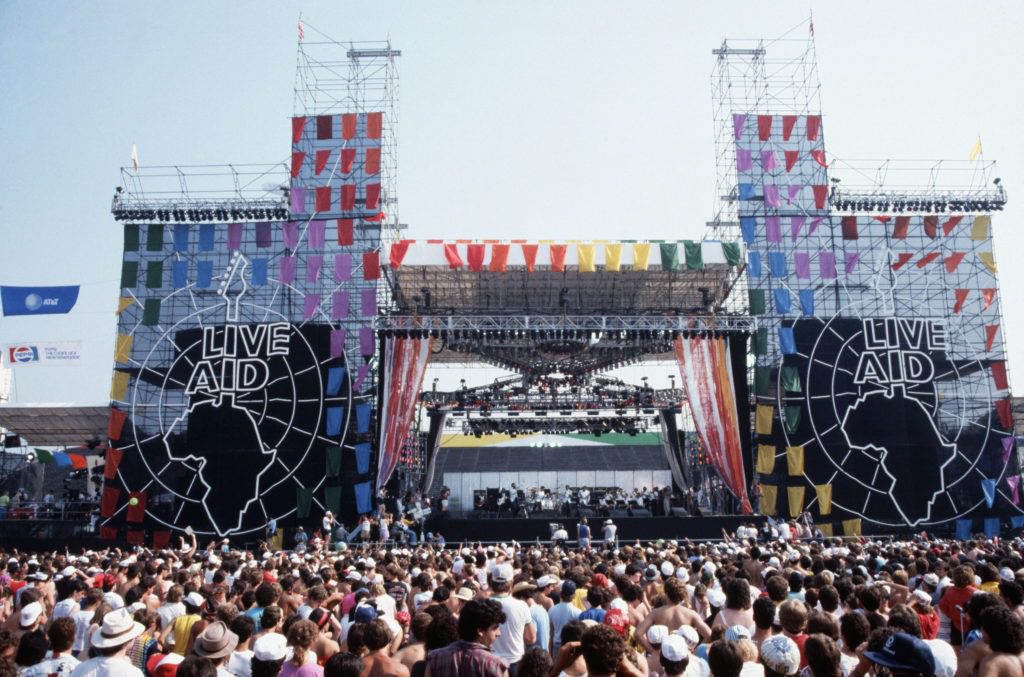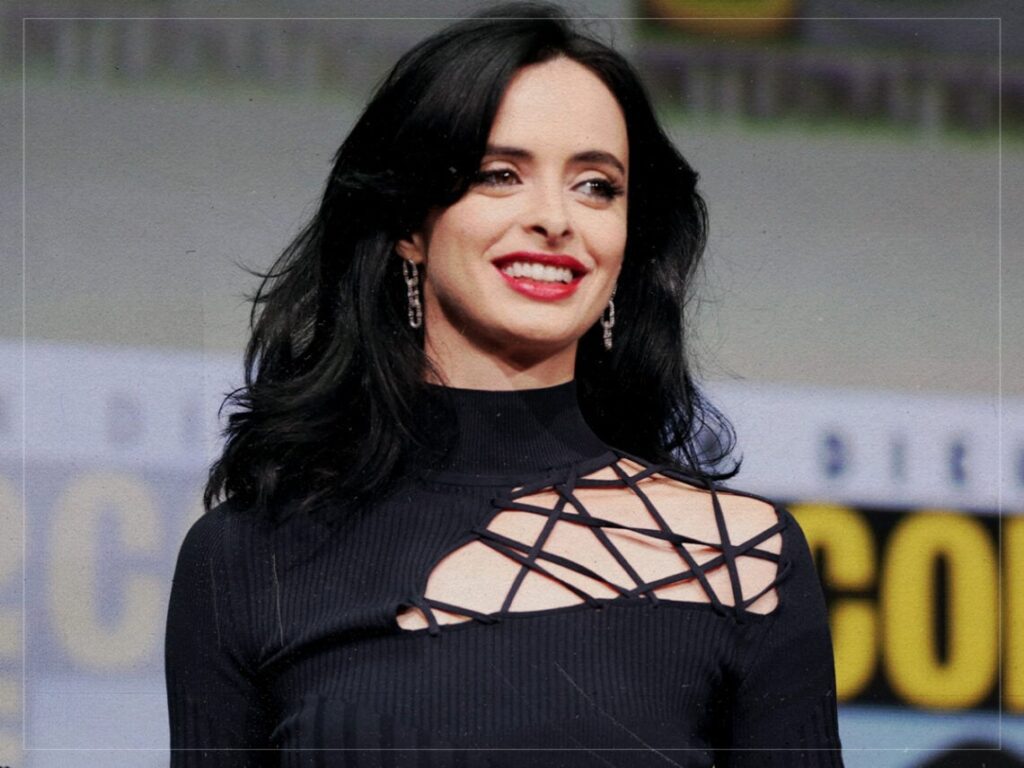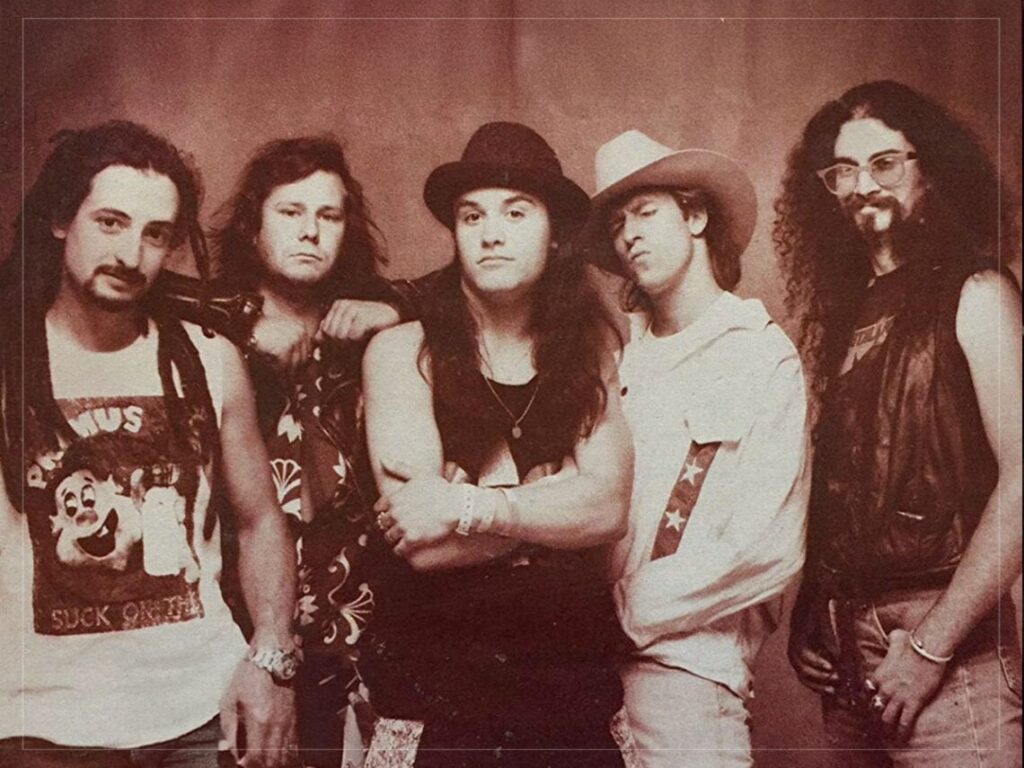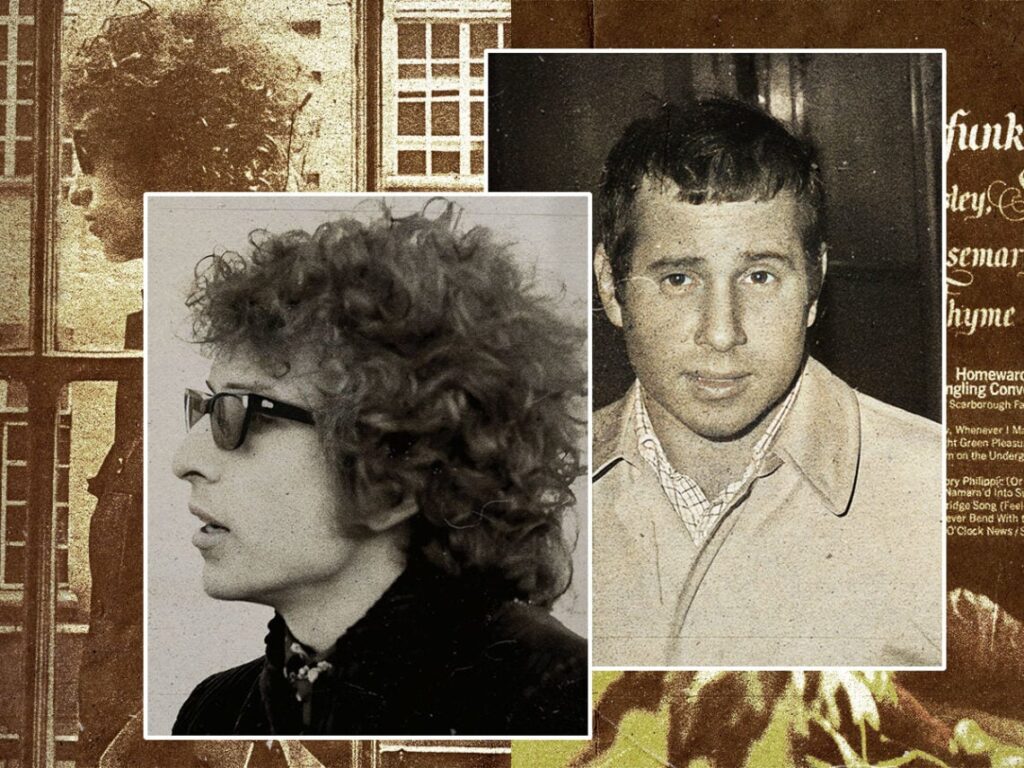Leather Pants and Chicken Wings: The Real Stories Behind Live Aid
 Posted On
Posted On
Take it from Rob Halford: It is difficult pulling leather chaps over sweaty legs. The Judas Priest frontman would learn that lesson anew when his band arrived at the since-demolished John F. Kennedy Stadium in Philadelphia to perform as part of Live Aid, which unfolded on two continents 35 years ago today.
“It was an absolutely boiling, scorching, muggy day — I remember that,” Halford recalls of the ambitious, 16-hour-long benefit concert experienced globally by more than a billion people in over 140 countries. “As I was putting my leathers on, I was going, ‘Oh, here we go again … mad dogs and Englishmen going out in the midday sun.’”
As Live Aid was happening, Halford — like all of the big-name musicians and actors who’d brave the Philly summer heat that sweltering day — knew that the first-of-its-kind event was history in the making, and believed strongly in the concert’s noble if not credulous aim: To eradicate famine in war-ravaged Ethiopia. Several of them left the high-profile gig thinking that the more than $125 million they helped raise would end up changing the world somehow.
They were wrong.
Orchestrated by Boomtown Rats frontman Bob Geldof and former Slik guitarist Midge Ure, who dubbed the affair “a global jukebox,” Live Aid’s lineup was wide-ranging, from pop sensations like Madonna, Bryan Adams, and Duran Duran to heavy metal masters Black Sabbath and Judas Priest and future rap icons Run-DMC. Phil Collins craftily engineered a maligned mini-Led Zeppelin reunion, Mick Jagger traded vocals with Tina Turner, and of course, Queen delivered the performance of their career at London’s Wembley Stadium, upstaging everyone else on the entire Live Aid bill — a moment in time immortalized in the biopic Bohemian Rhapsody.
“We returned to the road after that show, thinking we’d all done something really good,” Rick Springfield recalls via phone. “But it was a little naïve to think we’d make any kind of a difference. To me, it always felt like giving someone a fish instead of giving them a fishing pole. It didn’t seem like the best move you could make — to throw money at the problem. No one bothered to keep track of all that money, so, in the end, they didn’t even get the fish.”
Springfield adds: “You can’t just raise money and then expect people to always do the right thing.”
The “Jessie’s Girl” singer was among the myriad superstars to share the Live Aid stage in Philadelphia. SPIN spoke with him and Kenny Loggins — who got the Philly crowd of nearly 90,000 all “Footloose” on that historic day — as well as Bill Ward, the former drummer for Black Sabbath, and the leader of Judas Priest, who helped rock the City of Brotherly Love to its very foundations. Hometown heroes Hall & Oates would not only headline Live Aid, they’d even serve as Jagger’s backing band for five electrifying songs.
“I look back on those days, and it really does feel like another person lived that life, because I have evolved and changed so much as a person and as a musician,” John Oates says. “For us, it was just going to be another big gig, but it also made perfect sense. If Live Aid was going to be in Philadelphia, and we were at the height of our kind of pop powers, so to speak, we were like, ‘Yeah, let’s do this.’ And the lineup was incredible. So, we were flattered, and we were excited, and we were ready to go.”
“There are very few times in one’s career where you can be in the moment and you know you are doing something that resonates. Usually, you find these things out after the fact. Live Aid was one of those rare situations where I was in it, and I knew something phenomenal was happening, and significant, and I was aware of it, and I participated in that thought and really, being in the moment,” Daryl Hall adds.
“It was something that was meant to be helpful, on multiple levels,” Ward says, “so I was glad to be a part of it. It was more of an honor than anything else.”
However, as SPIN would expose in 1986, all of the funds that had been raised by this epic concert would end up falling into the hands of brutal militants, who’d use them to acquire advanced weaponry from the Russians.
Before the truth would taint Live Aid’s legacy, the groundbreaking concert was deemed an utter success, and universally applauded for shining a global spotlight on the horrors and atrocities occurring in Ethiopia. Culturally, it was a phenomenon, and as Halford points out, must’ve been a hell of an endeavor to coordinate.
“When you look at the list of talent that appeared, on both sides of the Atlantic – unbelievable,” he says. “And the stage, as you know, was a revolving stage that Bill Graham put together. In terms of efficiency, it was really good, because as one band was performing, the other was behind them, setting up. That was pretty cool, and a first for the industry.”
Joan Baez would kick things off in Philadelphia with “Amazing Grace.” The temps were in the mid-80s as she took the stage. “It was really hot,” Oates confirms.
Before Judas Priest would begin to make its way towards the Live Aid stage, Halford says he was approached backstage by Baez.
“I remember I had just finished chatting with Martha Quinn of MTV, and I see Joan Baez coming towards me, and my first thought is that she’s going to give me a telling off for what we did with her beautiful song ‘Diamonds and Rust,’” Halford remembers. “But of course, it was just the opposite. She came over to say, ‘Hey Robert, I just wanted to let you know my son thinks your version of ‘Diamonds and Rust’ is better than his mom’s version, because my son is a metalhead.’ I thought how sweet and kind and self-deprecating that is, for this legend, who took time to walk over and have a quick chat. That speaks volumes about the professionalism of so many people that day. Everybody was approachable and really there for the cause and so many people knew each other from various musical endeavors. It was amazing — everyone left their egos at the door.”
Halford can still remember waiting for Priest to go on: “We were standing on the side, and I had watched some of it before it was our turn. But, when it’s your time, they give you a nod, and you just walk out there and you get the job done, as we say. I remember it was just a sea of humanity. The great thing about the crowd, I thought, was they were so receptive to all kinds of music, because, let’s face it — I believe Crosby, Stills, Nash and Young went on before we did. The crowd was so enthusiastic, and for us, of course, there was a great response from the metalheads — the rockers in the crowd — who went crazy for us. The combination between the two aesthetics, you know — Madonna one minute and then heavy metal the next — it was extraordinary, and it was just wonderful to kind of get the emotion of that acceptance and enthusiasm coming back.”
When Black Sabbath’s original lineup reunited onstage with Ozzy Osbourne for the first time in six years, Ward was newly sober at the time.
“We showed up the day before, and I believe we had a rehearsal — we just jammed on a couple of songs,” Ward says. “The easiest thing for me was going on stage. That’s when I realized that I was at home — that’s where I felt most comfortable. I didn’t want to focus on how large the audience was, and I also didn’t want to focus on how many at home were watching. I had to focus every piece of energy I had on the actual performance. So, I was able to detach from the audience. Otherwise, I think I would have been overwhelmed. I needed to be focused, even though we were only doing three songs because they were songs I hadn’t played in some time with the original band. That was a big deal. So, I had to focus there, and that’s what I tried to do: ‘Just play drums, Bill — that’s your job today.’ And that’s what I kept telling myself.”
Thinking back on it, Ward adds: “It was a victory for me and having victories at 18-months sober was pretty important.”
All of the artists involved acknowledge there was not much of a scene backstage at Live Aid. In fact, they recall there being very few trailers available for the artists to use prior to or after performing which made things more casual.
“I thought it was funny when we showed up and I could see them taking Duran Duran’s name down and plastering our name on the trailer door,” Oates says. “There was an artist tent, where they had some refreshments, but it was nothing like festivals today, where there’s catering and this and that. I had a bunch of friends who were there, like Jack Nicholson and a couple of other people who I used to hang out with. They were there and I wanted to see them, so I was sort of more interested in the backstage hang and just, like, talking to people and seeing who was back there and doing that sort of thing.
“It would be nice to have this fantasy that the entire group of superstars was sitting around, hugging each other. But it wasn’t like that,” he continued.
Before he played his three tunes, including “Love Somebody,” Springfield was in his trailer, preparing — nervous and anxious about his upcoming set.
“My agent at the time was also Eric Clapton’s agent,” Springfield says. “He comes knocking on my door, and says, you know, ‘Eric would like to say ‘Hi,’ can you come over to his trailer?’ And I was like, ‘Oh dude, I can’t right now. I’m about to go on.’ So, I blew off Eric Clapton. I missed out on meeting one of the greats, and of course, I would never get that opportunity again.”
When he set foot onstage and saw the smiling faces of the crowd, Springfield was immediately at ease. “Whenever I played in front of a really big crowd like that, the energy — it’s weird — it physically lifts you,” he explains. “You feel lighter; you feel like you could fly. And it’s incredible, actually. I never expected that the first time I got in front of a really, really big audience — like in Europe, where they had those outdoor rock shows, and you’d get in front of 250,000 people… that changes things.”
After he was introduced by comedian Chevy Chase, Loggins only performed one song.
“I was only there for ‘Footloose,’ and at that time, I remember Chevy yelling to [concert promoter] Bill [Graham], ‘What should I say?’ and Bill goes, ‘Call him Mr. Footloose,’” Loggins recalls. “And that was it, you know. It was a huge rush. Plus, you knew there were cameras everywhere, so everything’s being chronicled and going out live. It was like something out of a movie. They did hustle me into a tent afterward to do play-by-play for the live television broadcast, but, you know, there wasn’t a lot to talk about. People wanted to hear the music.”
Hall remembers spending much of the day at the site, “sitting around, having drinks with all these people. I got there early in the day and was wandering around backstage, and just talking to people: Mick Jagger, the Temptations. Everybody was in a very friendly mood. Usually, artists tend to hang with their own people — in their own, what I call, ‘solar system.’ But in this case, people stepped out of that idea, out of their own individual bubbles, and were really interacting and hanging out as one big group of like-minded people, and that was going on all day.”
Oates recalls that he and Hall met with Jagger days before to practice for their performance.
“He came to Studio Instrument Rentals in New York, and we were all set up and ready to go,” he says. “He came in, and the thing I remember the most about it was, he was all business. But in a very good way. I remember we were on stage, waiting for him to show up, and he showed up and there was no fanfare. He didn’t have a big entourage or anything like that. Maybe one guy with him. He threw off his jacket onto a chair, and he just jumped on stage and grabbed the mic and went, ‘Let’s go.’ He counted it off and we played the song, and he went into the entire Mick Jagger routine: He did the chicken wings, and he was flapping his elbows and strutting around the stage. He did the song as if he were playing to 80,000 people. He wasn’t just stroking his way through the song. He didn’t just stand there and sing it. He performed the song just like he would have for a crowd. It was amazing, actually.”
According to Oates, Jagger never let on that Tina Turner would be joining them on stage that night.
“That was a total surprise,” Oates says. “We knew she was there, and that she was going to sing something, but we didn’t know what was going to happen. Then, of course, he brings up Tina, and they’re strutting around, and he rips her mini skirt off, and does that whole thing, and knowing Mick, I would say that he had that all planned. He’s a sharp dude. He had that planned, which was cool — but he didn’t tell anybody, and I think that was even cooler.”
Hall couldn’t help but think “that it was the first time that the whole world was observing an event. And as we played, I felt like the whole world’s eyes were on me, and us, up there. So, I felt it. I allowed myself to feel it, and I said, ‘Okay, I owe it to everyone to throw it back, to do something significant, something I care about, something I believe in, something a lot of people believe in.’ At least at the time, everybody was of one thought. It was an idealistic experience.”
The evening was capped by a star-studded performance of “We Are the World,” featuring practically every performer from that day’s lineup. “I remember Patti LaBelle was incredibly loud,” Loggins says, “and she owned the microphone.”
“Everybody was crammed on the stage. I was standing next to Keith Richards … it was remarkable, actually,” Halford recalls.
Several performers were also pulled aside to shoot a famous photo — one that’d end up on the cover of People.
“They just grabbed a group of us, and I don’t know how they decided who was going to be in that group, but it was Tina, it was Mick, it was Madonna, it was Ronnie Wood, Keith Richards, me and Daryl, and Bob Dylan,” Oates explained. “It was a posed picture. They took us to this place and said, ‘We need to get this shot.’ And they posed us. Someone had planned that and put it together — the organizers or some photographer planned that. I knew everybody, so it was cool. I thought I was in pretty good company there.”
While the Live Aid’s aftermath has tainted its legacy, Hall doesn’t regret his involvement.
“People have their own opinions after an event, and after the fact — no matter what historical event happens,” Hall offers. “Everybody’s intentions were right, for people to get together over a good thing as opposed to other things that aren’t so good, or terrible. This was about something good. This was about a bad situation that the whole world was trying to make better and you can’t fault anybody for thinking that way. You can call them naïve and you can call them idealistic, but you can’t fault them for it. But I think what happened was inevitable. Still, for me, it was fun, and we were all in it together. It was great.”






